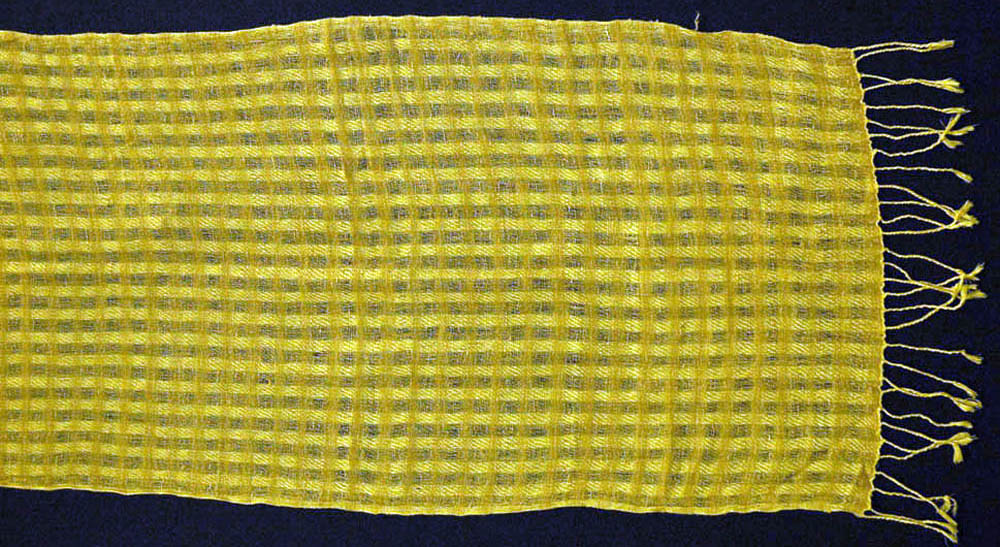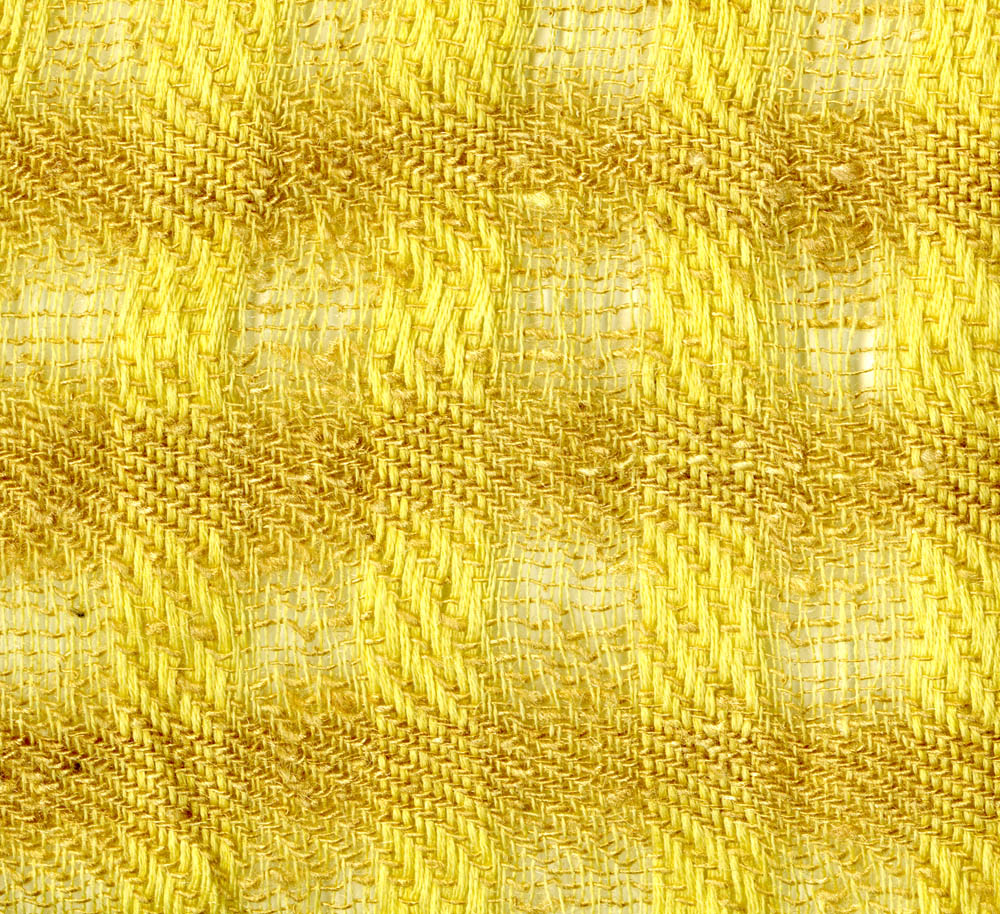Cricula trifenestrata (Helfer)
Cricula Silk
Cricula is a large genus of more than 20 species that range from the northern Himalayas of India and Nepal, down through tropical Asia to Sri Lanka and eastern Indonesia and the Philippines. Cricula are common in tropical China, but the genus is absent on Taiwan. The larvae live in large groups and spin their cocoons in masses (Lampe 2010). In Northeast India, Bangladesh, Indonesia, Malaysia, and other countries, Cricula trifenestrata (Helfer)is considered a significant pest of mango and cashew, sometimes causing serious defoliation of the trees.
Cocoons of Cricula are a metallic golden color, but when they are processed into yarn and woven into fabric, the silk becomes a dull yellow, losing the gold shine of the cocoons. The cocoons are reticulate and have an exit valve at the anterior end. They contain urticating hairs that the caterpillars shed when constructing their cocoons, and these must be thoroughly removed during processing of the silk so that the fabrics do not cause itching when worn.
A silk industry based on Cricula trifenestrata now exists in Yogyakarta, in central Java, a famous textile center known for its batik factories. Additional comments pertaining to this silk project are given under our text for Attacus atlas. If you are searching the internet for information about cricula silk, try using also the misspelling criculla.
References
Akai, H., Takayuki Nagashima & Reiko Nakatomi. 1996. Structural and ultrastructural
characteristics of golden cocoons of Cricula trifenestrata. International Journal of Wild
Silkmoth & Silk 2: 27-35.
Kakati, L. N. & Bhuban Chandra Chutia. 2009. Diversity and ecology of wild sericigenous
insects in Nagaland, India. Tropical Ecology 50(1): 137–146.
Lampe, R. E. J. 2010. Saturniidae of the world...Pfauenspinner der Welt: their life stages from
the eggs to the adults...ihre Entwicklungsstadien vom Ei zum Falter. Verlag Dr. Friedrich
Pfeil, München. 368 pp.




